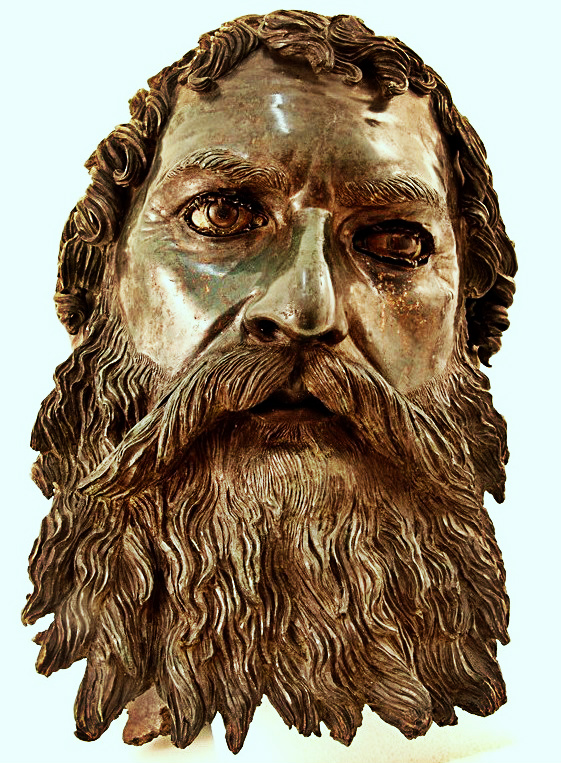Facts for Kids
Thracian is an extinct Indo-European language once spoken in parts of southeastern Europe, known primarily from inscriptions and limited literary references.
Overview
Economy And Trade
Culture And Society
History And Origins
Art And Architecture
Language And Writing
Religion And Beliefs
Geography And Climate
Interactions With Neighboring Civilizations

Inside this Article
Greek Alphabet
Creativity
Mountains
Herodotus
Afterlife
Thracians
Community
Culture
Greeks
Did you know?
📖 Notable artifacts containing Thracian inscriptions include pottery and coins.
🌍 Thracian has sparked interest in historical linguistics due to its enigmatic nature.
📜 The Thracian language was spoken in southeastern Europe, primarily in what is now Bulgaria and parts of Turkey and Greece.
🔤 It belongs to the now-extinct Indo-European language family.
📚 Thracian is recognized primarily through inscriptions and a limited number of literary references.
🔍 The language exhibits influences from neighboring languages, including Greek and Latin.
🏺 Some scholars believe that Thracian was closely related to the Dacian language.
✍️ Very few Thracian words have been definitively deciphered and understood.
🗣️ The last known speakers of Thracian likely vanished by the early centuries AD.
🧬 The language is sometimes considered a remnant of ancient Proto-Indo-European languages.
Introduction
The Thracian language is considered a part of the Indo-European family, which means it is related to languages like Greek and Latin. However, it is a mystery because not many people can understand it today! 🤔
Scholars have found some words and inscriptions, but there is a lot we still don’t know about how the Thracians spoke.
Economy And Trade
They grew crops like barley, wheat, and grapes. This helped them make yummy foods like bread and wine! 🍇
Thracians also raised animals like cows and sheep. They traded with neighboring cultures, exchanging goods like textiles and pottery. Their strategic location among various empires, like the Greeks and Romans, allowed them to be a part of the bustling trade routes! 🐴
Culture And Society
Family and community were essential to them, and they communicated important events through oral traditions, which might have influenced the way they spoke!
History And Origins
️ The Thracian people were known for their warrior culture and lived in tribes. The language started disappearing around the 7th century CE when other cultures, like the Romans and Byzantines, spread through the region. 🏺
Even though Thracian faded away, it still leaves a mark on history through inscriptions, pottery, and stories from ancient historians like Herodotus! 📚
Art And Architecture
They created intricate gold jewelry, pottery with fascinating designs, and beautiful wall paintings. Thracians built tombs called "kurgans," which were large mounds where important people were buried. These tombs often contained amazing treasures! ⛪
They also made sculptures of their gods and heroes, which showed their creativity and beliefs. The art of the Thracians tells us a lot about their lives and culture!
Language And Writing
️ Some words appear in these inscriptions, but there is still much research to do! Many scholars believe that Thracian had many dialects, meaning different tribes might have spoken in unique voices. 🗣
️ It's like having different accents today! The mystery of the language puzzles researchers because only about 200 words are known. They are hopeful to discover more in the future! 🔍
Religion And Beliefs
They worshipped deities like Zalmoxis, a god tied to life and afterlife. Rituals and ceremonies were essential, and they often involved music and dance. Thracians believed in the spirits of their ancestors, and they made offerings to please them. 🎉
They buried their dead with items for the afterlife, showing respect and love for their family members. Religion was a big part of Thracian life!
Geography And Climate
️ The Rhodope Mountains and the Maritsa River are two exciting natural features. The climate varies: it can be hot in summer and cold in winter, which means the Thracians had to adapt to different weather conditions. 🌞❄️ They lived in villages, where they farmed and raised animals. Their love for nature also influenced their language, as many words were about plants, animals, and the land where they lived!
Interactions With Neighboring Civilizations
The Thracians also faced invasions from the Romans, who wanted to expand their empire. 🌍
Despite these challenges, Thracians influenced their neighbors through trade and culture. They shared agricultural knowledge and stories, which helped in creating connections. Today, we can still discover the secrets of the Thracians through their rich history and interactions with others! ✨

